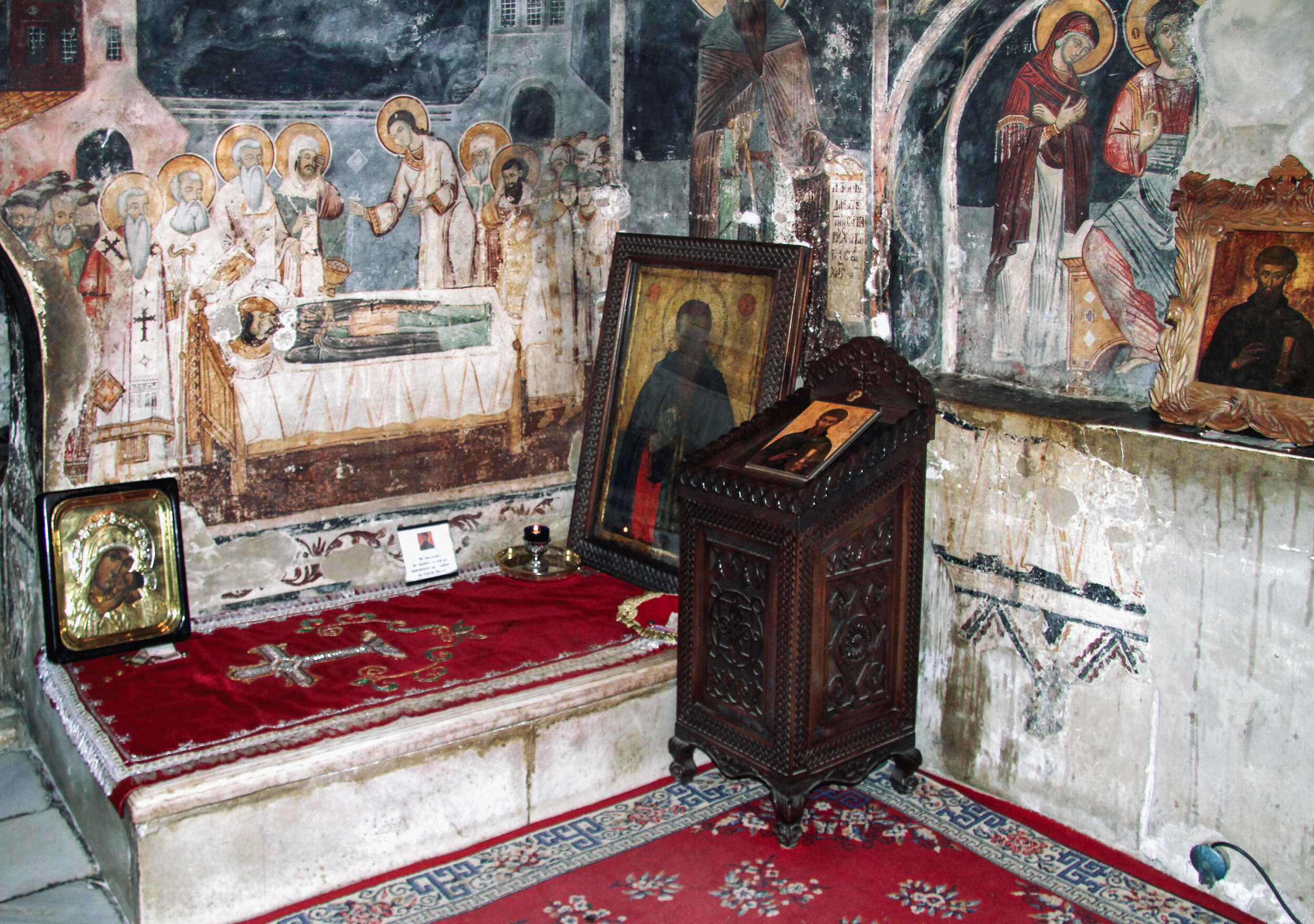Sari Saltuk alias Saint Naum
Religious Pluralism, Shared Sacred Sites in the Indian Subcontinent and the Balkans
Ethnographic fieldwork in North Macedonia, November 2011, June 2015 | Conducted within the framework of the research project ‘The Visual and Material Culture of Sufism in Central and Southeastern Europe’ | Outcome: 3 conference papers, 1 peer-reviewed book chapter, and 1 peer-reviewed journal article/1 book chapter [forthcoming]
During the visit of the English historian Frederick Hasluck in 1914 to the monastery of Sveti Naum (Alb. Shën Naum) on Lake Ohrid, the abbot told him a story he had heard from a Bektashi Baba from the Korça region. According to this tale, both Sari Saltuk and a Christian abbot were miraculously transported on a straw-mat across Lake Ohrid. Sari Saltuk’s assimilation to a Christian saint is further exemplified by his identification with the founder of the monastery, the Eastern Orthodox Saint Naum, who converted the Slavs to Christianity in the middle of the ninth century. With the support of Boris I (852–889) and Simeon I (893–927) of Bulgaria, Saint Naum, who travelled throughout the northern Balkans to spread Christianity, founded a monastery, subsequently bearing his name, and a small church called Archangel Church on the south bank of Lake Ohrid in 895, where he was buried in 910. Perched on a rock overlooking the lake, the monastery, which was rebuilt on the foundations of the original church during the 16th and 17th centuries, is located near an important surface spring complex that feeds not only the lake but also the Crn Drim River. Saint Naum is venerated as a Christian healer and wonder-worker to whom many miracles are attributed and his monastery enjoys a reputation for curative powers.
Due to the presence of the first printing press in the Ottoman Balkans outside Istanbul, the village of Voskopojë (Moschopolis, present-day Moscopole), in the Korça (Korçë) district of south-eastern Albania, developed into a short-lived but major center of Orthodox culture. This prominence, combined with the concurrent rise of the Archdiocese of Achrida (Ohrid), led to the spread of the cult of Saint Naum in the first half of the 18th century. Albanian Muslims, especially Bektashis, went on pilgrimages to the monastery of Saint Naum, believing Sari Saltuk to be buried there. The pilgrimages of both Orthodox Christians and Muslims to the monastery became so numerous that in 1727 the Archbishop Ioasaph of Achrida, who was from Voskopojë, moved the date of the feast day of Saint Naum from 23 December to 20 June in an effort to make the pilgrimages for both Christians and Muslims less strenuous during the warmer summer climate.
A steady stream of Muslim pilgrimages to Saint Naum appears to have continued throughout the second half of the 18th century and on into the 19th. The cult was so important that the prominent Albanian writer Sami Shemseddin Frashëri (1850–1904) recorded in his monumental six-volume Ottoman Turkish encyclopedia that Bektashi pilgrims came to pay their respects at the monastery, considering the tomb of Saint Naum to be that of Sari Saltuk. This is corroborated by the Serbian journalist Branislav Nušić (1864–1938) who visited the region in 1892, observing that the tomb of Saint Naum was venerated by the ‘Turks’ and that the village ‘Svetinaumsko’ (Holy Naum) was called ‘Sarisaltik’ after Sari Saltuk. Based on information from the abbot of the monastery, Hasluck notes that in the 1920s many Bektashis of the Korça region used to make the pilgrimage to worship the saint under his Islamic name. Up until 1947, and again after 1990, many Albanian Muslims made the pilgrimage to the Eastern Orthodox monastery. When I visited the monastery in April 2012 to enquire about Sari Saltuk’s resting place, the caretaker and the monks were very welcoming (and evidently used to visitors wishing to visit the tomb of the Muslim saint) and showed me Saint Naum’s catafalque set into a niche. It is surmounted on the long side by a composition of ‘Naum’s Ascension’ and on the narrow side by a frontal depiction of the saint in full length at a mature age, with a long reddish beard and monk’s garb, holding a pastoral staff and an open inscribed scroll, both painted by the artist Trpo in 1806. I was told that Saint Naum’s tomb continues to attract many Muslim pilgrims from the Balkans and from Turkey who come to venerate the burial place as the mekam (Arabic maqam; place where a saint resides) of Sari Saltuk.
Excerpt from “Multiplication, Translocation and Adaptation: Ṣarī Ṣaltūq’s Multiple Embodied Localities Throughout the Balkans,” in: Constructing and Contesting Holy Places in Medieval Islam and Beyond, eds. A. Görke and M. Guidetti, Islamic History and Civilization series (Leiden: Brill) [forthcoming].







